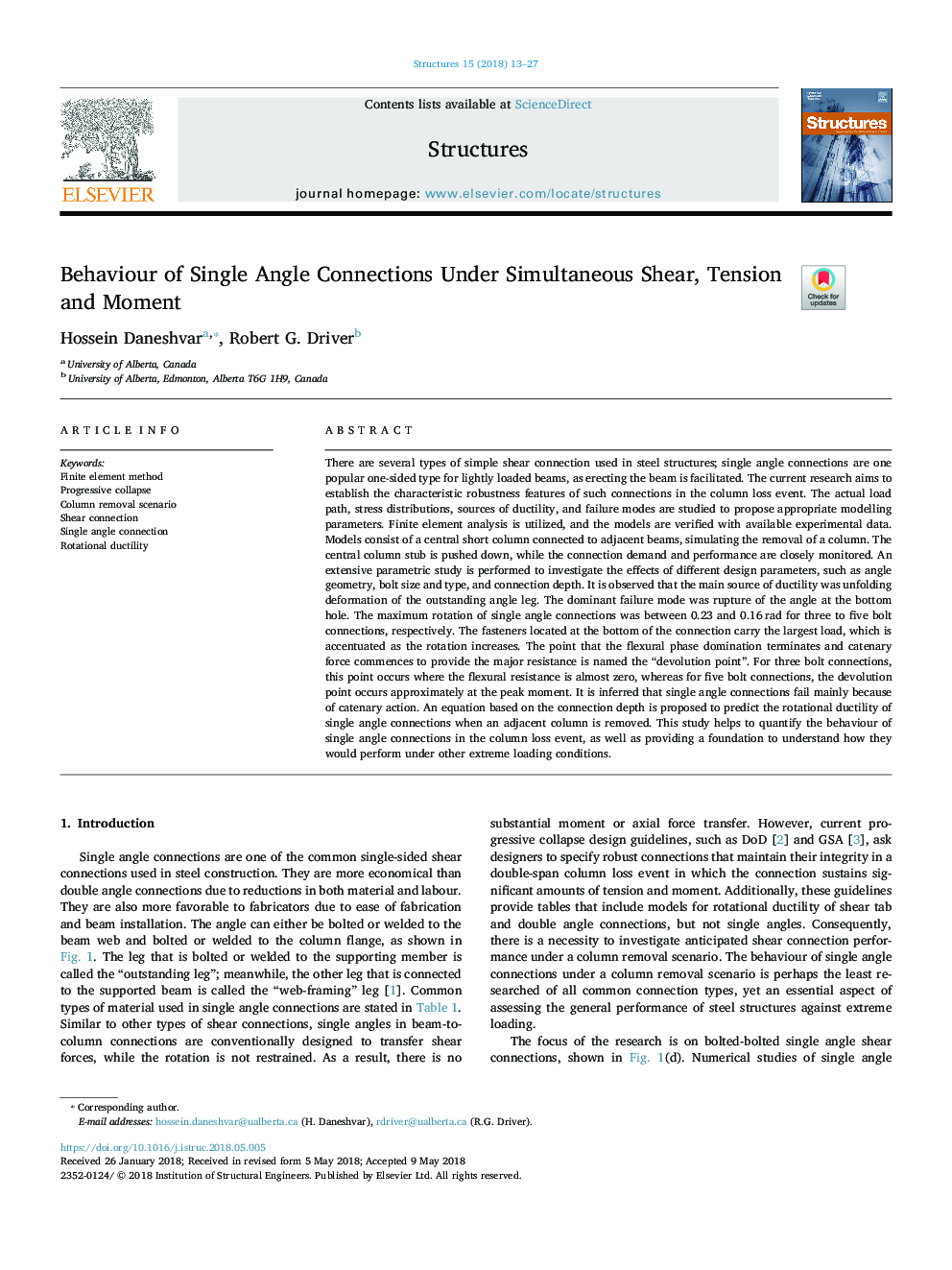| Article ID | Journal | Published Year | Pages | File Type |
|---|---|---|---|---|
| 6774244 | Structures | 2018 | 15 Pages |
Abstract
There are several types of simple shear connection used in steel structures; single angle connections are one popular one-sided type for lightly loaded beams, as erecting the beam is facilitated. The current research aims to establish the characteristic robustness features of such connections in the column loss event. The actual load path, stress distributions, sources of ductility, and failure modes are studied to propose appropriate modelling parameters. Finite element analysis is utilized, and the models are verified with available experimental data. Models consist of a central short column connected to adjacent beams, simulating the removal of a column. The central column stub is pushed down, while the connection demand and performance are closely monitored. An extensive parametric study is performed to investigate the effects of different design parameters, such as angle geometry, bolt size and type, and connection depth. It is observed that the main source of ductility was unfolding deformation of the outstanding angle leg. The dominant failure mode was rupture of the angle at the bottom hole. The maximum rotation of single angle connections was between 0.23 and 0.16â¯rad for three to five bolt connections, respectively. The fasteners located at the bottom of the connection carry the largest load, which is accentuated as the rotation increases. The point that the flexural phase domination terminates and catenary force commences to provide the major resistance is named the “devolution point”. For three bolt connections, this point occurs where the flexural resistance is almost zero, whereas for five bolt connections, the devolution point occurs approximately at the peak moment. It is inferred that single angle connections fail mainly because of catenary action. An equation based on the connection depth is proposed to predict the rotational ductility of single angle connections when an adjacent column is removed. This study helps to quantify the behaviour of single angle connections in the column loss event, as well as providing a foundation to understand how they would perform under other extreme loading conditions.
Related Topics
Physical Sciences and Engineering
Engineering
Civil and Structural Engineering
Authors
Hossein Daneshvar, Robert G. Driver,
